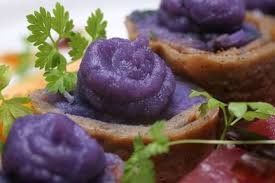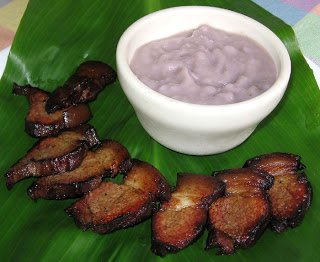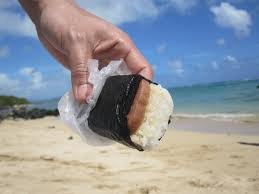There are any numbers of wonderful reasons to take a timeshare vacation to the islands of Hawaii. And the food is one of them.
Hawaiian cuisine is a delicious mix of Polynesian, Asian, Portuguese, and American influences.
The Hawaiian Islands also have their own unique foods that certainly add interest to many of their dishes. Here are 3 for you to consider:
1. Poi.
For centuries a staple of the Polynesian diet, poi is made from the tuber of the taro plant. The tuber is cooked either by baking or steaming, and then mashed to a viscous fluid.
The consistency is determined by the amount of water that is added during the mashing process and again just before serving. The desired consistency is highly personal, and can range from liquid to dough-like, being called one-finger, two-finger or three-finger, depending on how many fingers you would have to use to eat the poi by dipping it out of the bowl.
Poi has a paste-like texture and a delicate flavor. Fresh poi is sweet. Each day thereafter the poi loses sweetness and turns slightly sour. Sour poi is still quite edible and delicious with salted fish, lomi lomi salmon, and terriyaki meat on the side. Sour poi is also used as a cooking ingredient, usually in breads and rolls.
2. Hawaiian Purple Sweet Potatoes. (See top photo)
These tubers are a member of the morning glory family and are called ‘uala in Hawaiian.
Sweet potatoes are such an important part of a the Polynesian diet that they were one of the 30 plants the Polynesians selected and brought with them when they first settled Hawaii in the 6th century. By 1400 AD sweet potato farming was quite extensive and regular consumption was definitely a main portion of the islander’s healthy diet.
Hawaiian Purple Sweet Potatoes have a beautiful purple coloring which makes them appealing to kids and are visually attractive when plated. Their natural sweetness casts them as a star in desserts and as a wonderful contrasting flavor in savory dishes as well.
They are wonderfully versatile and can be a key ingredient in everything from chips to ice cream. These purple potatoes have a naturally creamy flavor and texture and hold their shape well for salads.
Hawaiian Purple Sweet Potatoes maintain their lovely lavender hue even after cooking
3. Spam.
Yes, that pink pork that is pressed into a can. Hawaiian residents eat more than 6 million containers every year, the nation’s highest per capita consumption of the processed meat.
The state’s love affair with Spam began during World War II, when rationing created just the right conditions for the rise of a meat that needs no refrigeration and has a remarkably long shelf life.
And leave it to the Hawaiians to make Spam uniquely their own. Served with a Polynesian flair, Spam in the islands can be found combined with rice and wrapped in seaweed, or served with eggs topped with pineapple.
The most popular Hawaiian version of the potted meat is Spam musubi — teriyaki-fried Spam served on nori-wrapped rice, which is massed produced and widely available, including at most convenience stores (see photo).
Spam is served in a variety of forms and can be found on the menus of both high-end restaurants and fast food joints.
Enjoy an island vacation by staying in a budget-friendly Hawaii timeshare rental, and then use your timeshare kitchen to have fun preparing your own Polynesian versions of these culinary curiosities.
Photo Credit (1): tastyislandhawaii.com
Photo Credit (2): iowaavenue.com
Photo Credit (3): emiandkyleheartfood.blogspot.com


